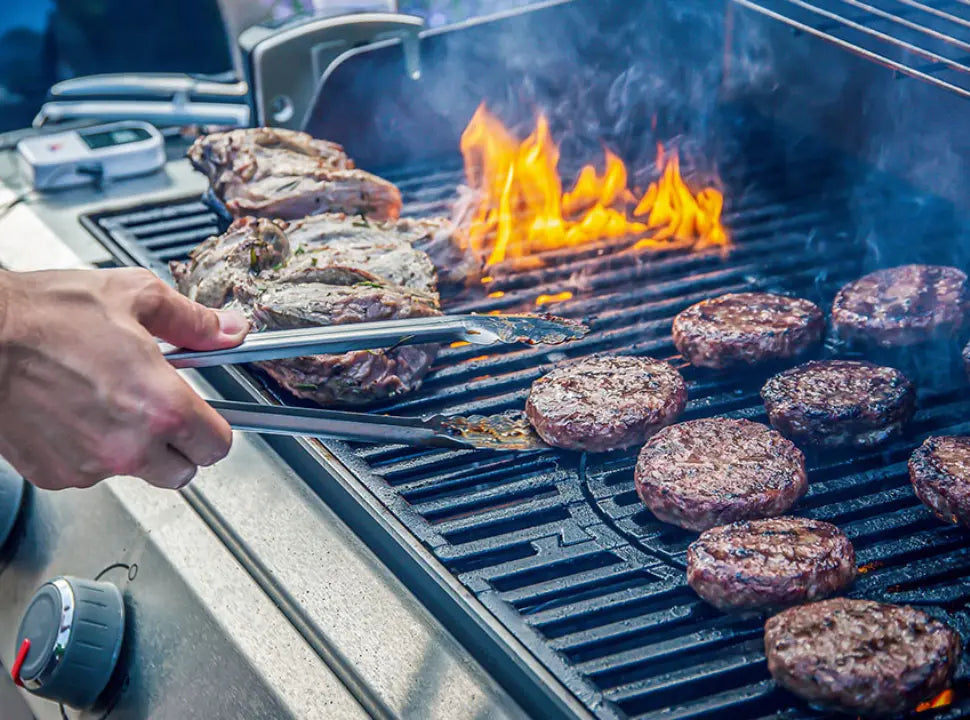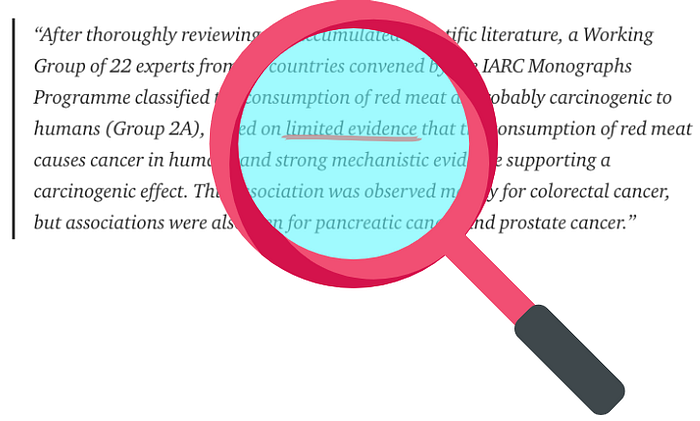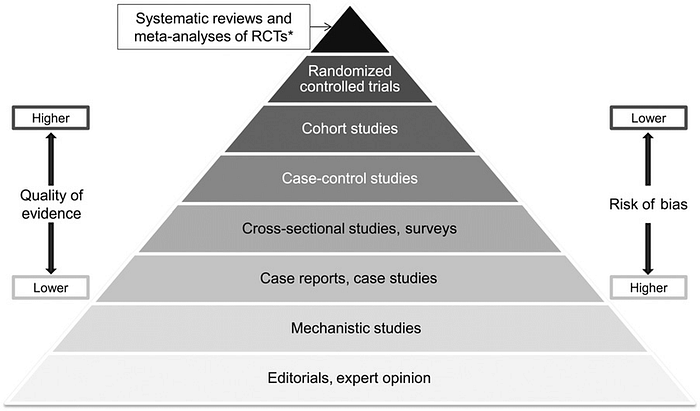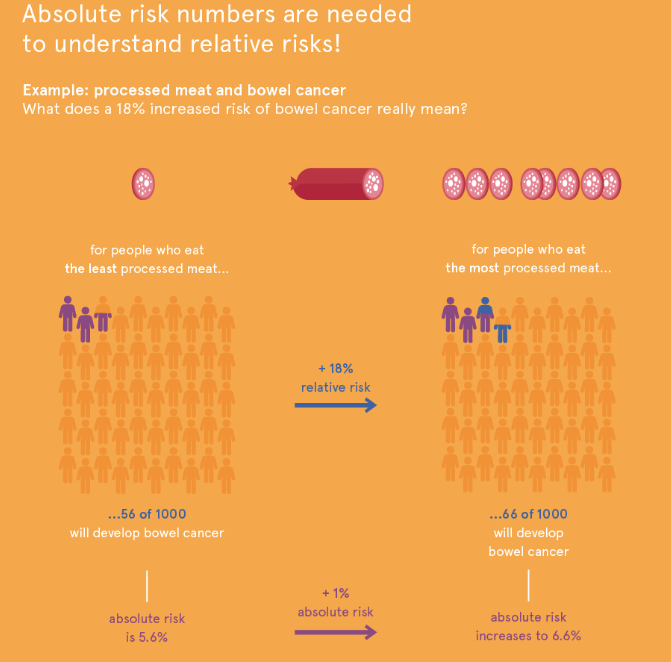
Why is the World Health Organisation Anti-Meat?
Share
A look at the laughable evidence used by the IARC to wrongfully condemn red meat.
"Tim, the World Health Organisation, has classified red meat as a carcinogen."
In 2015, the World Health Organisation (WHO), published a report produced by their International Agency for Research on Cancer (IARC). It was notable because of its classification of red and processed meats. Publishing a summary in the prestigious medical journal, The Lancet, they stated:
After thoroughly reviewing the accumulated scientific literature, a Working Group of 22 experts from 10 countries convened by the IARC Monographs Programme classified the consumption of red meat as probably carcinogenic to humans (Group 2A), based on limited evidence that the consumption of red meat causes cancer in humans and strong mechanistic evidence supporting a carcinogenic effect. This association was observed mainly for colorectal cancer, but associations were also seen for pancreatic cancer and prostate cancer.
Notice please they have not classified red meat as a carcinogen, but have called it ‘probably carcinogenic’. As far as the average Joe is concerned there is no difference, because the words that weaken the statement — made bold in the quote above — are hidden in the shadows of extremely frightening words; ‘red meat causes cancer in humans, strong mechanistic evidence, carcinogenic effect’ and again, ‘cancer, cancer, cancer’. Hypnotic, isn’t it?
The word ‘probably’, mentioned just once despite it changing the meaning of almost the entire paper, offers them an escape when the time comes. And, make no mistake the time is coming because their evidence against red meat was not sufficient to condemn it, and had it been on trial, red meat would have been free to roam once again.
An absence of nourishing foods, including red meat, often means an increase in highly processed junk foods.
Red meat is healthy and nutritious
As a registered nutritionist, I recommend people eat red meat because it’s high in bioavailable nutrients, in which many people are deficient. The IARC report agrees with me to some extent too:
‘Red meat contains proteins of high biological value, and important micronutrients such as B vitamins, iron (both free iron and heme iron), and zinc.’
Evolving with red meat as a staple food, shortened our guts and enlarged our brains because of the density of the nutrients within it and the complete lack of fermentation required to access them. More nutrients, for less work.
An absence of nourishing foods, including red meat, often means an increase in highly processed junk foods — excessive carbohydrates being the clear winner — that are the real drivers behind the obesity epidemic, and its myriad related health problems that will bankrupt our health services and undermine the word of those institutions that should have been protecting us.
Red meat, until recent times the cornerstone of a nutritious diet for the fortunate few, is being attacked from many angles because idealism, ego and good old fashioned corruption have permitted weak science to permeate our guidelines and fog our brains so that we find ourselves the only species on the planet at a loss about what to eat.

Limited evidence
The WHO’s definition of limited evidence is the following,
‘Limited evidence means that a positive association has been observed between exposure to the agent and cancer but that other explanations for the observations (technically termed chance, bias, or confounding) could not be ruled out.’
‘Observations’ means data received from observational studies. These are a type of research, including epidemiology, that sits below randomised control trials (RCTs) in the hierarchy of evidence, as seen in the image below, grouped together under the term ‘cohort studies’.

Observational studies do not show causation and were never designed to. Partly because data collection for this type of research is unreliable. Scientists leave it up to individuals to tick boxes about their diets. Collectively, conscious or otherwise, people are not honest about they’ve eaten.
The IARC summary tells us:
‘The Working Group assessed more than 800 epidemiological studies that investigated the association of cancer with consumption of red meat.’
Impressive. From this huge pile the working group dumped most of the papers, leaving just fourteen cohort studies for analysis. Only half of which showed a ‘statistically significant association’ between the consumption of red meat and colorectal cancer (CRC). Not so impressive. By the way, the score for processed meat was twelve associations out of eighteen. Helpfully, this world changing analysis adds:
‘Consumption of red meat was also positively associated with pancreatic and with prostate cancer.’
Unhelpfully, they decided not to give us the references for this statement. But hey, they mentioned cancer forty-five times and red meat thirty-four times in under five columns, which is something Derren Brown, famed London-based illusionist, is hard pressed to beat when hypnotising an entire theatre full of people.
Once you’ve recovered from their mentioning over 800 studies and realise that their ratio for and against red meat is one to one, then consider that observational research is not capable of showing causation, it kind of takes the spring out of your step, doesn’t it?
Let’s look at their other evidence.
Relative risk
The IARC report states boldly:
‘..a 17% increased risk [of colorectal cancer] per 100 g per day of red meat and an 18% increase per 50 g per day of processed meat.’
It’s critical to note that these are relative risk numbers. Presuming the data is accurate, these percentages represent the difference between those people studied that eat the least red or processed meat, versus those people in the study that eat the most.
Cancer research UK remind us that even the actual risk numbers, seen in the infographic below, may not accurately reflect your chances of developing colorectal cancer due to the myriad variables at play in cancer development.


Strong mechanistic evidence?
The IARC summary report tells us that they have ‘strong mechanistic evidence’ that red meat causes cancer in humans. They state:
‘In three intervention studies in human beings, changes in oxidative stress markers (either in urine, faeces, or blood) were associated with consumption of red meat or processed meat.’
This was actually a single human intervention study of eighteen volunteers, plus two rodent studies rolled into one paper, hence the misleading statement of ‘three intervention studies in human beings’.
The brave humans were fed processed meat, not fresh red meat, with the catchy name of DCNO which stands for ‘dark cooked meat with nitrite, oxidized’. This laboratory ‘food’ is excessively processed to increase both reactive nitrites and oxygen molecules. The next time you buy some salami have a look at the back, you’ll see an antioxidant like vitamin C (ascorbic acid) on the ingredients list. This useful addition reduces the oxygen and nitrogen reactivity by quenching the reactive molecules that can cause damage to the food and potentially our guts.
In the rodent part of the research, scientists used a luckless group of rats who had just had their gut-protective mucosal layer wiped out with a poison. Sounds fair. Unsurprisingly, the researchers discovered high levels of reactive molecules in their rodent samples. These molecules are damaging if left unquenched by the bodies antioxidant system. The combination of deliberately injured guts and excessively reactive food, devoid of other nutrients meant the rats didn’t stand a chance.
Despite the gut injuries, a luckier group of rats were able to mitigate the reactivity and proposed carcinogenic effect of the DCNO when the scientists included vitamin E and calcium to their diet. What’s the take away from this? Avoid eating DCNO if you’ve just been poisoned and, if for any reason you can’t, eat some calcium and vitamin E to mitigate the effects.
The next IARC referenced paper spawned this sentence:
‘Red and processed meat intake increased lipid oxidation products [reactive molecules that degrade fats] in rodent faeces.’
I had a look at this paper too and couldn’t help reading the second sentence in the abstract over a few times:
‘Puzzlingly, meat does not promote carcinogenesis in rat studies[…]Here, we tested the hypothesis that heme-rich meats promote colon carcinogenesis in rats treated with azoxymethane and fed low-calcium diets (0.8 g/kg).’
‘Puzzlingly, meat does not promote carcinogenesis in rat studies’. That is until they poisoned them with azoxymethane, a carcinogenic neurotoxin used specifically in research to induce colon cancer, and then made sure there was no calcium in their diet. Bravo!
You may think I’m being flippant, and I am, but this is how mechanistic papers are used to prove something can happen under a set of very specific circumstances; the combination of being poisoned and removing vital micronutrients from the diet.
Does this mean that including red or processed meat in your diet — that should also include the very micronutrients shown to mitigate the issue — is a danger to you? Of course not, and it’s irresponsible to say otherwise.
The IARC paper now moves on to another couple of papers cited after this sentence:
‘Substantial supporting mechanistic evidence was available for multiple meat components (NOC, haem iron, and HAA).’
These chemicals are out to get you — ignore the fact that haem iron is essential for life — and the IARC have produced two papers to prove it. The first, studied twenty-three subjects over four weeks, the second, twenty-five subjects over three weeks. I shall address each of the so-called problematic chemicals one at a time.
NOCs
NOCs are converted from nitrites (the stuff they topped up in the processed meat study mentioned earlier). Eighty to eighty-five per cent of nitrites in the body are converted from nitrates in foods. I’m going to refer to nitrates to keep it simple. Now, you could be forgiven for thinking that all the nitrates we eat come from processed meats, and you’d be wrong.
Actually, eighty per cent come from vegetables, just five per cent from meats. As with most things nutrition research, conclusions are conflicted as a review published in the journal Aging & Disease (2018), demonstrates:
‘Normal dietary nitrate and nitrite showed no harm to human health and no confirmed evidence stated the explicit association of dietary nitrate and cancer. Most existing research on nitrite and tumors ignored the complicated compounds in target foods, resulting in contradictory conclusions among researchers.’
Zooming into a single chemical in a food doesn’t tell you about the overall health benefits of that food. Hopefully, you’re eating whole foods, that come with synergistic chemicals that may mitigate any negatives. You know, like the fact that calcium and vitamin E mitigated the carcinogenic affects of the reactive molecules in pre-poisoned rats, discussed a little earlier.
It’s worth knowing that the level of nitrates in our vegetables are increasing due to chemical fertilisers, and decreasing in processed meats. In fact, some leafy greens (grown hydroponically) actually contain more than is recommended to eat. And whilst we’re here, the widely accepted DASH diet, for the treatment of high blood pressure, may be as much as 550% too high in nitrates.
The puzzle of whether or not nitrates—and the inevitable nitrites and NOCs produced within us after eating any foods that contain them—has not sufficiently taken shape. If you want my two cents it’s this; it depends on the environment into which the nitrates find themselves. Your digestive processes and intestinal flora must be in good order so they can disarm those harmful substances by just going about their business.
When scientists added resistant starch to the meal, the mechanistic paper used by the IARC shows a mitigation of the issue supposedly caused by red meat. We can’t digest resistant starch, hence its name, so we outsource this job to our commensal gut flora, in return for this provision of food and housing, they help keep us healthy.
Haem Iron
Haem iron is the most bioavailable form of iron. It only comes from animal products, red meat is a great source. Iron is one of the most common nutrient deficiencies in the world, with vegetarians more likely to be lacking in it versus omnivores. It’s absolutely essential for life. Overdosing is possible if you supplement it, have a rare genetic disorder or cook with
